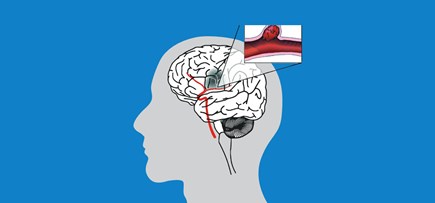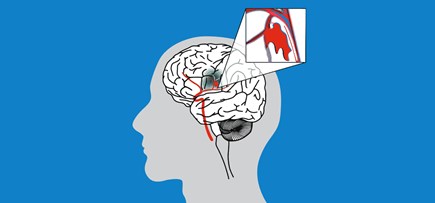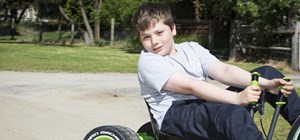What is childhood stroke?
A stroke is when blood cannot get to all parts of your brain. If this happens, your brain can be injured.
Blood carries oxygen and nutrients for your brain cells.
Blood flows through your blood vessels. Blood vessels are like tubes or pipes. Blood vessels can be blocked. They can break or burst.
If blood cannot get through, brain cells start dying and your brain can be injured.
Stroke can happen at any age.
Perinatal stroke happens before birth or shortly after birth, between 28 weeks of pregnancy and one month old.
Childhood stroke happens in a child aged from one month to eighteen years old.
Are strokes common in children?
- Up to 600 children will have a stroke each year in Australia.
- Stroke is more common in newborns and young babies than older children.
- Stroke affects one in 2300 to 5000 newborns.
- Around a third of all strokes in children occur under one year of age.
Types of stroke
There are three main types of stroke:
Ischaemic stroke is caused by an artery being blocked by a blood clot.
Haemorrhagic stroke is caused by bleeding when a blood vessel breaks.
Cerebral sinovenous thrombosis causes blood clots in the veins within the brain.
Stroke signs
If you notice any of these signs, call triple zero (000) immediately.
Babies:
- Seizures.
- Extreme sleepiness.
In babies, there may not be signs while the stroke is happening. You may notice changes in the way your baby develops over time, like using only one side of their body.
Toddlers, children and teenagers:
- Weakness or numbness in the face, arm or leg, especially on one side.
- Difficulty talking, understanding, reading or writing.
- Trouble seeing or loss of vision.
- Dizziness, loss of balance or poor coordination.
- Severe or unusual headaches, nausea or vomiting.
- Difficulty swallowing, including drooling.
- Seizures with weakness that doesn’t improve.
- Changes in behaviour and difficulty concentrating.
- Stroke can sometimes cause children to collapse.
If you notice any of these signs, call triple zero (000) immediately. Even if you aren't sure, or the signs disappear, call triple zero (000).
Causes of stroke
Causes of stroke in children are different to those in adults. Medical conditions can increase the risk of a child having a stroke. It is not always possible to find the cause of a stroke in babies and children. Some parents worry that they did something to cause their child's stroke. This isn't the case.
Perinatal stroke:
- Pregnancy complications.
- Difficulties during birth.
- Infections.
- Blood clotting disorders in mother or baby.
- Heart problems.
Childhood stroke:
Problems with the brain's blood vessels can increase the risk of stroke.
- Vasculitis can cause a blood vessel to become narrow or weak.
- Focal Cerebral Arteriopathy (FCA) can cause blood vessels to become narrow.
- Head and neck trauma can cause blood clots to form or cause blood to leak from the vessel.
- Moyamoya disease can cause blood vessels to become narrow and blocked.
- An arteriovenous malformation (AVM) is a tangled mass of blood vessels in the brain that can burst.
- An aneurysm is a weak or thin spot on an artery wall that can burst.
- A cavernous malformation is a cluster of abnormal blood vessels in the brain that can leak.
Problems with the heart or heart surgery can increase the risk of stroke. Blood clotting or other disorders can also increase the risk.
How does stroke affect children?
A child’s brain controls everything they think, feel, say and do. How stroke affects them depends on the area of their brain that was injured and how badly. The effects are different for every child.
The most common effects include difficulties with:
- Walking, moving or using their arm.
- Swallowing.
- Speaking, understanding, reading, writing.
- Thinking, memory, judgment.
- Personality, behaviour, emotions.
- Vision, touch, taste, smell
- Fatigue.
Effects may be minor, or they may be more serious. A child’s brain is continuously developing and changing. Effects of stroke in a baby or very young child may become more obvious over time.
Recovery is usually most rapid in the weeks and months after their stroke, but recovery can continue for years. Starting rehabilitation early increases a child’s changes of a good recovery.
Resources & Support
-
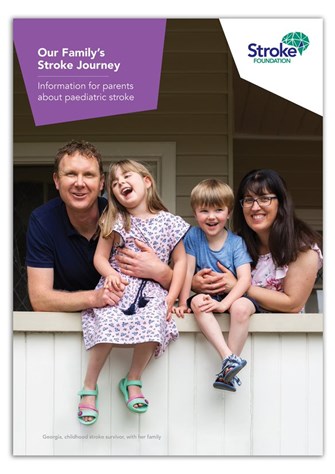
Our Family’s Stroke Journey
Information for parents about childhood stroke
Our Family's Stroke Journey has everything parents need to know about stroke in babies, children and teenagers:
- What is a stroke?
- How can stroke affect my child?
- What treatment and care will my child receive?
- What do I need to know about life after my child’s stroke?
- What help is available?
Download Our Family's Stroke Journey
If you would like a printed copy please contact StrokeLine.
We're creating further resources to support survivors of childhood stroke, families, carers and friends through our Childhood Stroke Project.
-
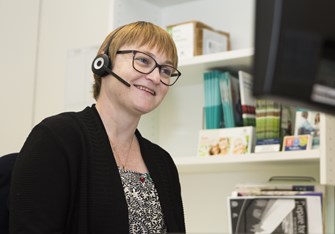
StrokeLine
Contact StrokeLine if you have any questions about childhood stroke.
StrokeLine's health professionals provide information and advice on stroke treatment, prevention and recovery. More about StrokeLine and operating hours
Call StrokeLine: 1800 787 653
Email: strokeline@strokefoundation.org.au -
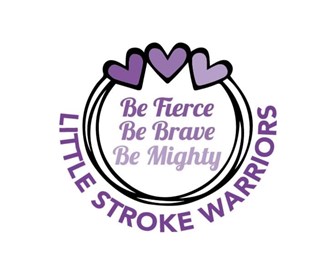
Little Stroke Warriors
Little Stroke Warriors Australia is a group of families and survivors of paediatric stroke.
It provides families and carers with a supportive community to help steer them through the journey of stroke recovery.
Little Stroke Warriors also raise awareness of paediatric stroke throughout Australia, to make sure all paediatric stroke survivors get the treatment and care they need, and that their families are well supported.
Follow Little Stroke Warriors on Facebook
If you are a parent, carer or survivor of childhood stroke over the age of 18 you can join the Facebook support group.
Read about the history of Little Stroke Warriors.

